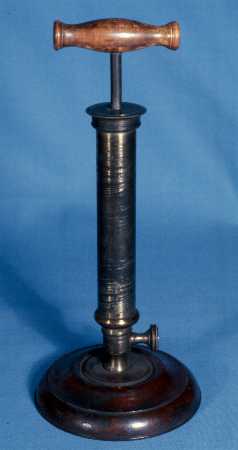Among the experiments that can be done with compressed air are the demonstration of sound with a siren, spinning a Hero's engine (or reaction turbine), supporting a light ball on a jet of air, and blowing air between two parallel plates (they come together -- Bernoulli).
The copper condensing reservoir at the University of Cincinnati is listed at $7.50 in the 1885 Queen catalogue. The condensing syringe is at Washington and Jefferson College in Washington, Penn., and is unmarked. However, a similar one in the Queen catalogue sold for $7.50
